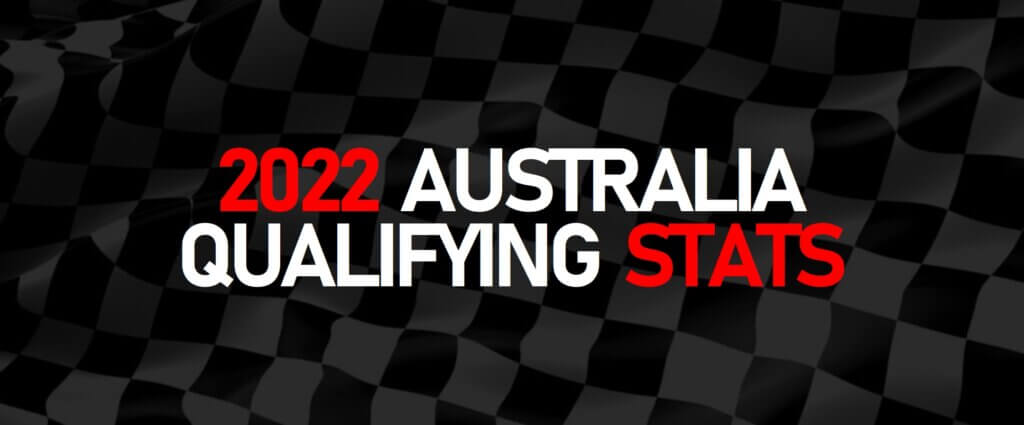Leclerc takes Ferrari’s first Albert Park pole since 2007, Bottas’ Q3 streak comes to an end and Vettel records his first Q1 exit in Melbourne. Here are the facts and statistics from qualifying at the 2022 Australian Grand Prix.
LECLERC ON POLE
Charles Leclerc secured pole position for the 2022 Australian Grand Prix, taking the 11th pole of his Formula 1 career. He does not move up the all-time pole list, as no other driver has taken exactly eleven poles in their career.
Leclerc takes Ferrari’s first pole at Albert Park since Kimi Raikkonen in 2007. This was Ferraris’s sixth pole here, seeing them equal Mercedes as the team with the most poles at the track.
Leclerc is the first driver other than Lewis Hamilton or Sebastian Vettel to take pole position at the Australian Grand Prix since Jenson Button in 2009. In total, Leclerc is the tenth different driver to have taken pole at Albert Park. His previous best qualifying result at the circuit was fifth on his Ferrari debut in 2019.
IN THE TOP 10
Max Verstappen qualified on the front row at Albert Park for the first time. His previous best qualifying result here was fourth, which is where he qualified on his last two visits to Melbourne.
Sergio Perez qualified in third place, recording his first top eight qualifying result at the Australian Grand Prix. His previous best qualifying result at the track was ninth place, with Force India in 2016. It makes 2022 the first time since 2013 that both Red Bull drivers have qualified in the top three at Albert Park.
McLaren made their first Q3 appearances of the 2022 season, with both Lando Norris and Daniel Ricciardo qualifying in the top ten. It’s the first time since 2012 that both McLarens have reached Q3 at the Australian Grand Prix.
Lando Norris maintained his 100% Q3 record at Albert Park. Jacques Villeneuve, Juan Pablo Montoya and Ralf Schumacher are the only other drivers who’ve reached Q3 on every appearance since the qualifying system was introduced in 2006.
Carlos Sainz qualified outside of the top three for the first time this season. With ninth place, Sainz recorded Ferrari’s worst Australian Grand Prix qualifying result since Kimi Raikkonen qualified 12th in 2014.
Fernando Alonso was on for a good lap in Q3 until he crashed out, leaving him only tenth on the grid. Nevertheless, this was Alonso’s first Q3 appearance in Australia since 2014.
OUT IN Q2
Valtteri Bottas qualified in 12th place, failing to reach Q3 for the first time since driving for Williams at the 2016 Abu Dhabi Grand Prix. It ended a record-breaking run of 103 consecutive Q3 appearances. His top ten qualifying streak was the third longest in F1 history, behind only Ayrton Senna (137) and Alain Prost (109).
Both Pierre Gasly and Yuki Tsunoda were eliminated in Q2, making this the first time in nine races that neither AlphaTauri driver qualified in the top ten. The 2021 Russian Grand Prix was the last time neither driver reached Q3.
For the first time since their maiden F1 race at the 2016 Australian Grand Prix, neither Haas driver qualified in the top ten at the Australian Grand Prix. With 15th place, Mick Schumacher recorded the team’s first Q2 exit at the track. He also out-qualified Kevin Magnussen for the first time.
A BAD DAY FOR ASTON MARTIN
It was a day to forget for Aston Martin. After both Lance Stroll and Sebastian Vettel crashed in Free Practice 3, the race was on to get the cars ready in time for qualifying. Stroll emerged on to the track and subsequently collided with Nicholas Latifi, meaning he failed to set a lap time. Stroll qualified 20th for the seventh time in his career. He last did so at the 2021 Mexico City Grand Prix.
Sebastian Vettel had only one lap to set a time in Q1. He qualified 18th for the fourth time in his career. This was only the second time, after 2014, that Vettel has failed to reach Q3 at Albert Park. It was his first Q1 exit at the venue.
This was the first time since 2019 that both of the Silverstone-based team’s cars were eliminated in Q1 at Albert Park.




